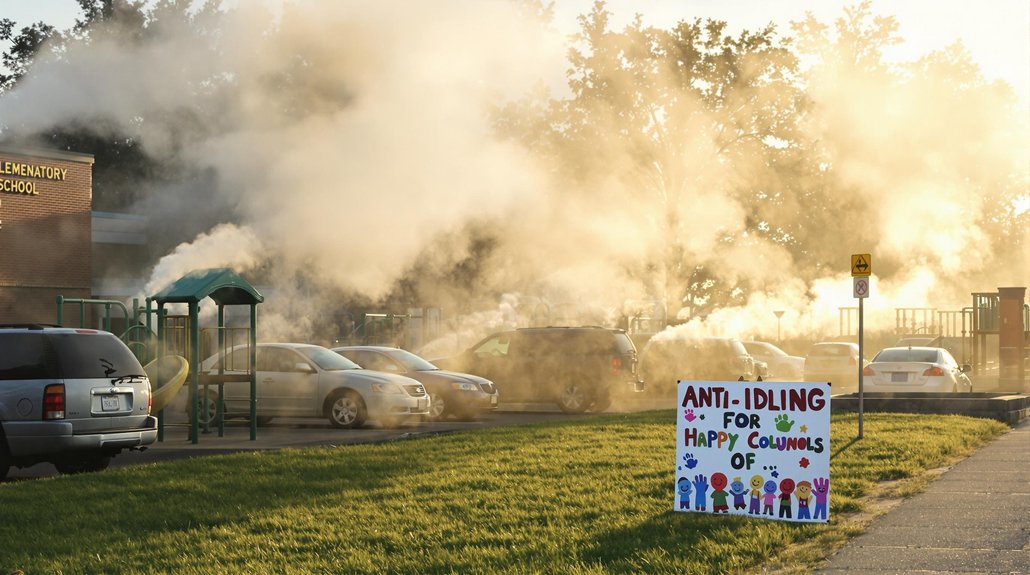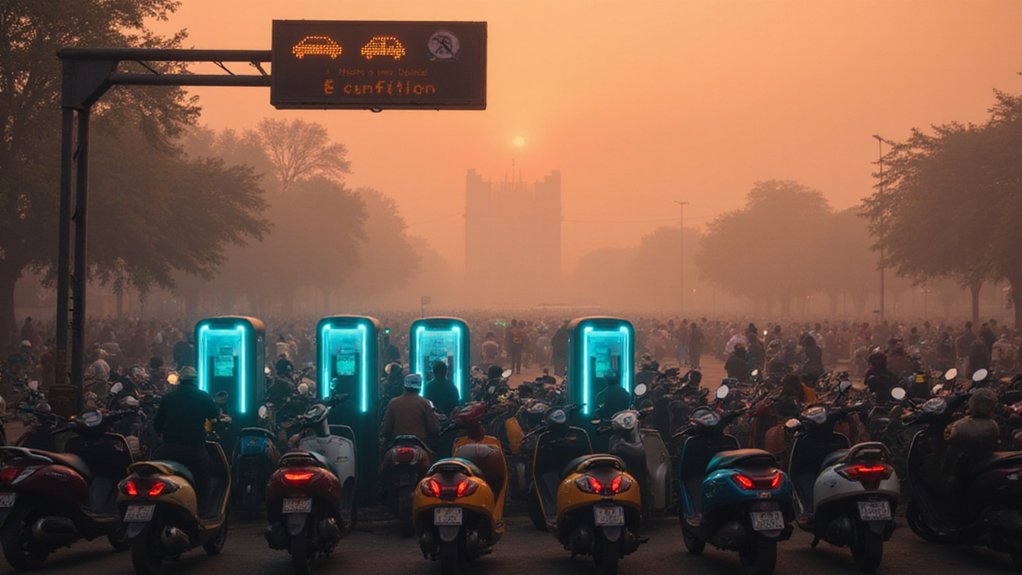While parents wait in their idling cars outside schools each day, their children are fighting back against a surprising health threat. Turns out those running engines aren’t just burning gas—they’re creating pollution hotspots that kids breathe every afternoon. And the little humans are sick of it.
The numbers are pretty damning. Those 20-30 cars idling for just 15 minutes waste nearly 3 gallons of fuel daily. Multiply that by 180 school days? That’s up to 500 gallons per school year. Now imagine that happening at 130,000 U.S. schools. Yeah, that’s a lot of unnecessary exhaust.
Kids, as it happens, are especially vulnerable. Their small bodies have higher inhalation rates, and they stand right at exhaust-pipe level. Perfect height to breathe in all those nitrogen dioxide and particulate matter cocktails. Great parenting, everyone.
But students aren’t just victims—they’re becoming activists. In Melbourne, primary schoolers started confronting their own parents about idling behaviors. Awkward? Maybe. Effective? Absolutely. These kid-led interventions reduced afternoon idling by 40% and morning idling by 18%. Nothing like being shamed by your own offspring to change behavior.
The health stakes couldn’t be higher. Asthma already causes 12.8 million missed school days annually in America. Short-term exposure to tailpipe emissions increases risks of asthma attacks and respiratory infections. Idling accounts for up to 20% of total travel time for Australian drivers, significantly contributing to overall trip emissions. Yet most adults mindlessly let engines run, apparently unaware that Ford itself recommends limiting idling to under 30 seconds.
Schools are now implementing formal anti-idling policies, with the EPA providing toolkits to support these efforts. Recent environmental campaigns have shown over 49% reduction in school idling when students get involved. This youth-led environmental activism mirrors the growing trend of edge computing solutions that can significantly reduce carbon footprints in technological applications. But the real heroes are the students themselves, who’ve discovered their own power to change adult behavior through direct conversations.
The irony is inescapable. Parents idle cars thinking they’re protecting their children from walking through parking lots, while literally poisoning the air they breathe. Sometimes kids really do know better than adults.
References
- https://phys.org/news/2025-08-students-air-pollution-schools-aim.html
- http://greendrivingamerica.org/sandt.html
- https://sou.edu/academics/wp-content/uploads/sites/14/2019/12/Zimmerman.pdf
- https://www.epa.gov/system/files/documents/2022-12/idle_free_schools_flyer.pdf
- https://afdc.energy.gov/files/u/publication/idling_personal_vehicles.pdf









